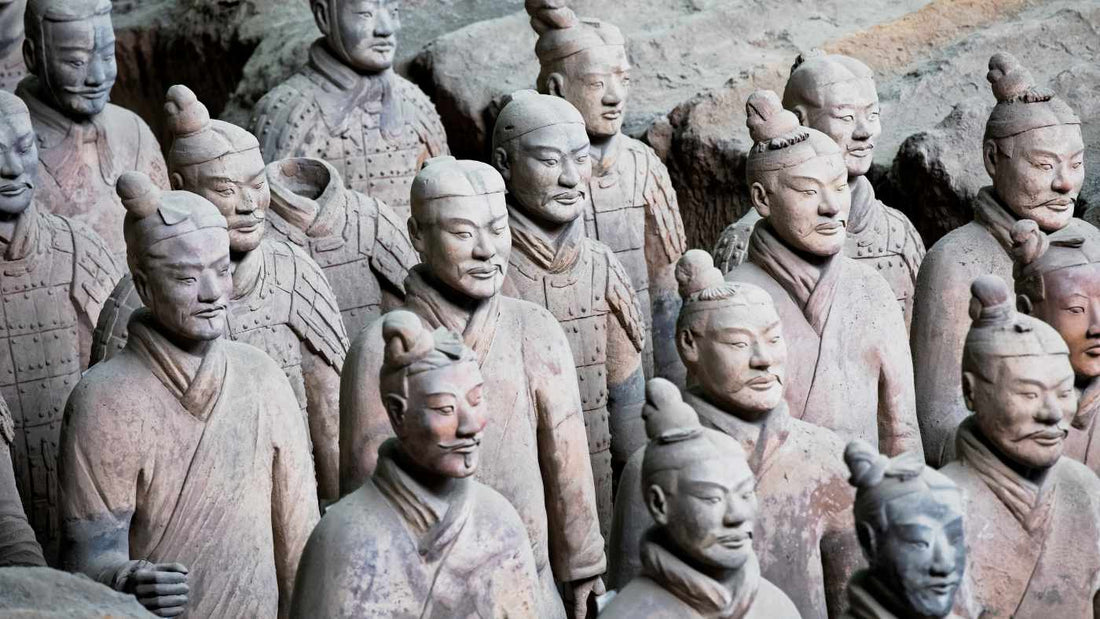
FIERCE ENERGY From 1200 BC MONGOLIAN “WARRIORS DIET”
Share
If you've seen the blockbuster TV series Game of Thrones, you've noticed how gallant and thunderous the Dothraki army was.
Yet, their exploits pale compared to those of the Mongolian "super soldiers."
Soldiers who, thanks to a lost, ancient diet, conquered more territories in just 27 years than the Romans did in 400 years.
The thought of running on all-day energy as they did might sound a bit overwhelming.
In this blog post, you'll see how even tiptoeing into this way of eating can give you the much-needed boost to clean out the patio, spend more time with the kids, and breeze through work.
That said, let's dive right in!
Animal nutrition to the tee
Even in ancient times, when animal nutrition was mainstream, some regions held nose-to-tail nutrition closer to the heart than others.
The Mongols are at the top of that list.
Under the rulership of the brute warlord Genghis Khan, the Mongolian soldiers traveled several hundreds of miles to faraway territories, surviving on nothing but animal products.
They'd prep several bags of food for their horses. Some soldiers would boil thin slices of meat (known today as Shabu Shabu) in their helmets.
They compressed cakes of dried mare's milk, and the soldiers would sometimes open a vein in the limb of their horses and let the blood jet into their mouths.
Extreme? Sure. But it kept the Mongolian soldiers spry enough to remain a dominant force for over 100 years.
What constituted the Mongolian warriors' diet?
These soldiers were 'anti-veggies'
They believed, "Meat is for men, and grass is for goats."
So it was meat, meat products, or nothing.
Here are some foods that make up their staple diet:
Fermented milk products
Mongolian soldiers were prominent in fermented milk products.
They regularly gulped down a fermented version of mare's milk called "airag," which helps strengthen the immune system against upper respiratory infections like colds, sore throats, and pneumonia.
Airag is prepared by milking the mares, allowing the fresh milk to cool, and stirring it repeatedly inside a cowhide vessel containing a starter that helps with the fermentation.
It is still one of the most popular drinks among the Kahlkha group, which makes up 80% of Mongolians.
Meat
Horse meat, mutton, beef, and goat in the territories they conquered.
Since their diet was heavy in protein and low in carbs, it's easy to see why they had so much agility and endurance.
Ram meat is considered a noble food to entertain guests during great sacrificial feasts. The Mongolians are particularly fond of mutton.
En route to a distant territory in the colder months, you'd often find slices of mutton underneath the saddles of most soldiers' camels.
Slices of mutton were done to preserve it from the frost.
Considering Mongolia is on the Asian continent and we're on the topic of meat, this is probably a good time to pop the question:
Mongols vs. Chinese: Who eats more meat?
A recent report reveals that over half of Chinese consumers eat meat regularly.
And while that's impressive, the Mongolian diet takes the lead.
In 2019 alone, the average yearly consumption of meat and meat products per capita in Mongolia was 225 pounds, while consumption in other meat-loving countries was 153 pounds, which is a 72-pound gap.
In addition, it is said that some Mongolians can eat an average-sized sheep in just 24 hours. Yikes!
Mongolians know the restorative power of animal nutrition; they've seen it work firsthand.
And even though the rest of the world has been sleeping on nose-to-tail nutrition, today it's becoming mainstream, and tons of Americans are seeing the healing benefits of an animal-based diet and animal daily essentials like our Nose to Tail Organ Complex.
In today's fast-paced world filled with stress, we need the energy and drive of a 1200 BC Mongolian soldier.



